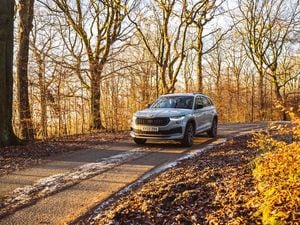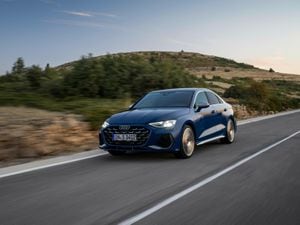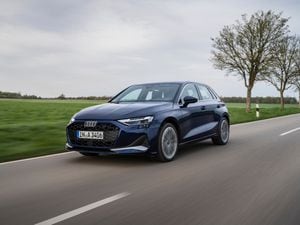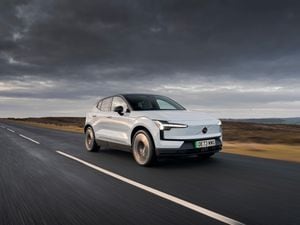UK Drive: The Smart #1 is here to shake up the electric car segment
Nearly everyone remembers the iconic ‘Smart car’. But what is its modern-day equivalent like? Jack Evans has been finding out.
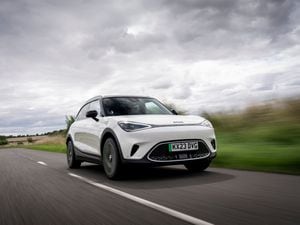
What is it?

>
You might not think it, but Smart actually has quite a bit of heritage with electric vehicles. It produced the first electric version of its famous city car back in 2008 and has been a fully electric brand since 2019 – so you could argue it got there before the term got trendy.
But heritage is all well and good – you still need a good product to deliver in the current day. That brings us to the Smart #1, the somewhat awkwardly-titled new EV that has been created with 50:50 owners of Mercedes and Chinese firm Geely. We’ve driven it abroad, but now we’re able to see what it’s like in the UK.
What’s new?

>
This Smart might not resemble the city car with thrust this firm into the limelight, but it’s certainly got some quirky, futuristic touches like the original. There’s the eye-catching ‘floating roof’ design, or the somewhat face-like front end. But there are also some core fundamentals that have been focused on, such as interior space and technology.
In fact, Smart says that because of the #1’s nifty EV-only platform – brought through parent firm Geely – it’s got as much room inside as a Mercedes E-Class, yet in a car with a footprint a fraction of the size.
What’s under the bonnet?

>
There are just two powertrain options with the Smart – either single motor, rear-wheel-drive in the ‘regular’ version (which we’re looking at today) or a more potent dual-motor version in the range-topping Brabus. A 0-60mph time of 6.5 seconds means that this standard #1 is by no means a slouch, yet it’ll return up to 273 miles of charge – entry-level Pro+-specification cars can only manage 260 miles as they do without an efficiency-boosting heat pump.
But Smart has also made sure that the #1 can accept a speedy 150kW rate of charge, too, which means a 10 to 80 per cent charge could be conducted in as little as half an hour. You’ve got different driving modes, too, and you can tweak how much regenerative braking is delivered as well.
What’s it like to drive?
The Smart exudes a kind of planted, reassuringly stuck-on driving feel that you don’t get from many electric vehicles. There’s acceleration aplenty, of course, but above and beyond that the #1 has very pleasant steering – which can be made weightier via a menu on the main screen – and there’s a decent amount of grip if you’re patient with the throttle.
We also had a go in the more powerful Brabus. Save for the additional motor – which brings total power to a faintly absurd 422bhp over the regular model’s 268bhp – there have been few mechanical upgrades made and, once you’re making the most of that extra boost, the #1 does struggle to maintain its composure, particularly over undulating surfaces. Of the two, we’d be much more inclined to stick to the ‘standard’ model as it’s more pleasant to drive for more of the time.
How does it look?

>
Smart has done a good job of translating some of the design of those classic ForTwo and ForFour models into a modern age. The full-width front light bar seems a rite of passage into the electric vehicle segment these days but it does look good, as does the matching full-width light bar at the rear. The boxy dimensions not only give the #1 a more, well, Smart-like look, but they also mean there’s more space inside for taller drivers and passengers.
The Smart badges on the C-pillars are quite a nice touch, too, and help to showcase from which brand this rather quirky-looking car is from.
What’s it like inside?

>
It’s a nice place to be, the cabin of this Smart. There are good materials used throughout and everything has been ergonomically placed. It’s a bit of a pain having the controls for the wing mirror adjustment located in the screen rather than with dedicated buttons, but it’s a minor niggle.
The seating position for the driver is a little higher than you might think, but it’s fine enough – and there’s plenty of adjustment for the steering wheel, too. Those in the back are treated to a decent level of head- and legroom, while the seats themselves slide and recline so you can mix-and-match how much space you want. The 313-litre boot is on the small side, however, though there is a teeny-tiny ‘frunk’ as well.
What’s the spec like?

>
Prices for the #1 kick off at £35,390, which is bang-on for the segment. A Tesla Model 3 – which in base specification only 45 miles more range – comes in at £42,990, for context. However, Smart has included a broad number of standard features from the off, including 19-inch alloy wheels, a panoramic sunroof and a 12.8-inch touchscreen.
At £38,950, our ‘Premium’ specification car does command a higher price tag – now £38,850 – but you do get leather seats, ambient lighting and a Beats sound system. Most importantly, you get a heat pump which increases the range from 260 miles in the Pro+ to 273 miles. There’s just one optional extra throughout the whole line-up, in fact – a tow bar.
Verdict
There are no two ways about it – the EV segment is getting pretty crowded these days. Standing out is trickier than ever, but the Smart is definitely on a strong course to achieve this – it’s priced well, has more than enough performance to keep things interesting while majoring on space and ease-of-use.
Though the entry-level version brings that headline price, we’d be more inclined to head in the Premium’s direction – it’s got more equipment, while the standard-fit heat pump will ensure it’s operating as efficiently as possible.

